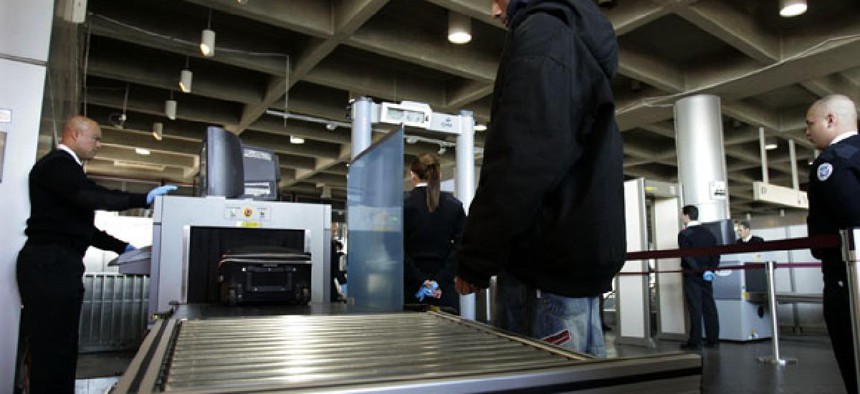DHS and academic researchers build a better shoe bomb . . . detector

A Homeland Security screener looks at an X-ray scan of a suitcase of a train passenger in 2006. Mike Derer/AP file photo
Northeastern University obtains $1.1 million grant to outfit CT scans with tools for recognizing explosives triggers.
The Homeland Security Department has funded a $1.1 million project at Northeastern University to advance the technique of using medical CT scans for bomb detection.
The research will be aimed at modifying computer tomography systems to automatically recognize explosives and items that can be used for detonation, according to federal business databases.
The award is part of a five-year agreement with the Boston-based school to develop a means of detecting and responding to bomb threats. In 2010, DHS forged partnerships with Northeastern and about 10 other institutions in areas such as border security and animal diseases contagious to humans, department officials stated at the time. Homeland Security annually assigns individual research orders to the participating schools, valued at up to $5 million total, per university.
Under this new grant, Northeastern’s roughly $3 million-a-year Awareness and Location of Explosives-Related Threats, or ALERT, program is designing sensor enhancements for CT detection systems.
The ALERT agreement also involves prototyping next-generation baggage screening and “suspicious passenger identification” tools, DHS officials said this week. Researchers are expected to execute the new project and the other potential experiments by devising algorithms for detecting triggers intended to set off improvised explosive devices, as well as mathematical formulas for improving baggage screening and for determining the best way to soften the effects of blasts.
According to the 2010 partnership announcement, to help reduce the blow from explosions, students and faculty will conduct fundamental research in three specific areas: the classification of explosives as commercial, military or homemade through analyzing crystal structures and reactivity; the detection of traces of explosives for eventually building sensors with more precise sensitivity and greater flexibility; and the understanding of construction materials to fortify bridges, tunnels, dams and other critical infrastructure against blasts.
Other “centers of excellence” involved in the 2010 five-year agreements include Texas A&M University, which is leading research into the prevention of diseases spread by animals like bird flu; and the University of Arizona, which is expanding the body of scientific knowledge on border security. The University of North Carolina at Chapel Hill is developing procedures to contain economic fallout and human casualties following natural disasters.
During the past several weeks, federal agencies and contractors have announced more than $840 million worth of bomb detection investments. On Sept. 26, officials at L-3 Communications said they won a potential $549.6 million contract from the Transportation Security Administration, part of Homeland Security, to supply explosives detection machines for bag screening. Throughout several days in September, TSA disclosed purchases of compact, next-generation body scanners from L-3, American Science and Engineering Inc. and Smiths Detection totaling $245 million. Earlier in September, DHS signed A-T Solutions to a five-year, $46 million deal aimed at countering homegrown bombers, company officials said.






